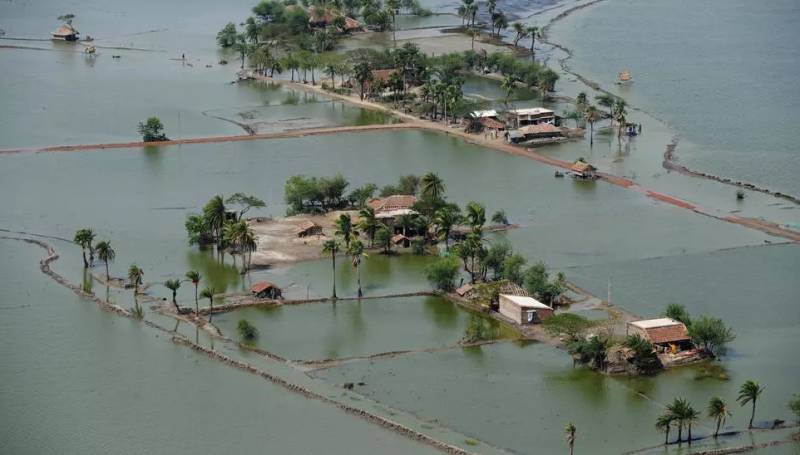300 million delta dwellers vulnerable to cyclones, flooding

Stay tuned with 24 News HD Android App

More than 300 million people in low-lying river deltas, mostly in poorer nations, are exposed to flooding from tropical storms made more deadly and destructive by global warming, researchers said Tuesday.
One in ten live on floodplains hit by once-a-century cyclones that can generate 350-kilometre (200-mile) per hour winds and up to a metre (40 inches) of rain per day, they reported in Nature Communications.
Warmer oceans and more moisture in the atmosphere mean these powerful storms may become more frequent, including in regions rarely touched by their terrible power in the past.
Densely populated deltas where rivers meet the sea are especially vulnerable to flooding caused by such warm-weather monsters, which crisscross the world's major oceans in summer and fall.
As the reality of climate change sinks in, policymakers must figure out not only how to slow rising temperatures but also prepare for inevitable climate impacts already in the pipeline.
But up to now, the population of the world's cyclone-exposed river deltas was not precisely known, making it difficult to plan ahead.
"The big question we are trying to answer is how may people live on river deltas and what is their vulnerability to coast flooding," lead author Douglas Edmonds, a geomorphologist at Indiana University, told AFP.
To find out, Edmonds and colleagues combed through 2017 data for 2174 deltas across the globe.
They calculated that 339 million people lived within their boundaries, all but 10 million of them in developing and least developed countries.
- Not enough sediment -
More than three-quarters reside in only 10 river basins, including the Ganges-Brahmaputra, with 105 million people, and the Nile delta with 45 million.
All but a few delta dwellers are potentially in the pathway of tropical storms, with exceptions such as Saint Petersburg, Russia, built at the mouth of the Neva River.
Deltas, the researchers discovered, occupy just over 0.5 percent of Earth's land mass, but are home to nearly five percent of the planet's human population.
"We were surprised to learn that most of the deltas with a large number of people living in the 100-year tropical cyclone floodplain are sediment-starved," Edmond said.
That, he added, is very bad news in the face of rising seas and ever bigger storm surges.
"Delta landforms exist at the coastline because sentiment is deposited near shore," he explained. "When sea level rises, the delta can respond by either shrinking in size or by filling the space with sediment."
But much of the silt and sediment that once enriched agricultural land and built up natural defences against ocean tides and surges has been blocked by dams upstream in virtually all major river systems.
"That means natural mitigation through sediment deposition is not possible," Edmond said, noting that the problem is often compounded by subsidence -- cities sinking under their own weight and due to depleted water tables.
A third of greater Jakarta, home to 30 million people, could be submerged by 2050, according to experts.
The only option left in that case to combat coastal flooding is "hard engineering measures," Edmond added.
